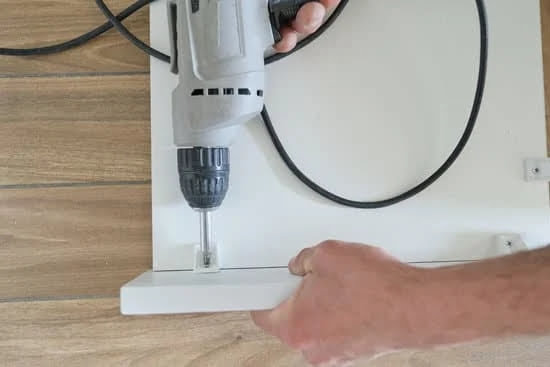Woodwork adds a touch of warmth and elegance to any home, but it also requires regular cleaning and maintenance to preserve its beauty. Knowing how to clean woodwork in the house is essential for ensuring that it remains in top condition for years to come.
Whether it’s your wooden doors, baseboards, window frames, or furniture, keeping these surfaces clean not only enhances their appearance but also contributes to a healthier living environment. In this article, we will explore the importance of maintaining clean woodwork in your home and provide practical tips on how to effectively clean and care for different types of woodwork.
When it comes to keeping your home clean, woodwork is often an overlooked area. However, neglecting the cleaning of wood surfaces can lead to a buildup of dust, dirt, and grime, which not only detracts from the overall look of your home but can also degrade the quality of the wood over time.
Regular cleaning not only preserves the aesthetic appeal of woodwork but also ensures its longevity and durability. Additionally, clean wood surfaces contribute to better indoor air quality by reducing the accumulation of allergens and pollutants.
In this comprehensive guide, we will cover everything you need to know about cleaning and maintaining various types of woodwork in your house. From identifying different types of woodwork and understanding their specific cleaning requirements to providing step-by-step instructions on the cleaning process, stain removal, polishing techniques, and long-term maintenance tips-this article aims to equip you with all the necessary knowledge and tools to keep your woodwork looking its best.
Let’s dive into the world of woodwork cleaning and discover how simple yet essential it is for a well-kept home.
Types of Woodwork
Woodwork is a beautiful feature in many homes, adding character and warmth to the space. However, it’s important to keep these surfaces clean to maintain their beauty and longevity. Identifying the different types of woodwork in your house and understanding their cleaning requirements is essential for proper maintenance.
1. Baseboards: These are located at the bottom of walls and are prone to collecting dust, pet hair, and other debris. Regular cleaning is essential to keep them looking tidy.
2. Trim and Molding: Whether it’s crown molding, chair rails, or picture rails, these features add elegance to a room but can easily accumulate dirt and grime.
3. Doors: From entry doors to interior doors, wood doors are common in many homes. Cleaning them regularly not only keeps them looking good but also helps prevent damage from built-up dirt.
4. Cabinets: Kitchen cabinets, bathroom cabinets, or built-in cabinetry all require regular cleaning to maintain their appearance and function.
Cleaning Requirements:
– Dusting: Use a microfiber cloth or a gentle duster to remove dust from woodwork surfaces.
– Vacuuming: Use a soft brush attachment on your vacuum cleaner to remove any loose dirt or debris from crevices and corners.
– Gentle Cleaning Solution: A mild dish soap mixed with water is effective for cleaning most woodwork surfaces without causing damage.
Understanding the type of woodwork in your home will guide you on how best to clean them effectively without causing any damage. Regular maintenance will ensure that your woodwork retains its beauty for years to come.
Tools and Materials Needed
Woodwork in a house can come in various forms, including baseboards, trim, doors, and cabinets. These wooden surfaces add warmth and character to a home but can also accumulate dust, dirt, and grime over time. Cleaning woodwork not only improves the overall aesthetics of your living space but also helps prolong the life of these surfaces. In this section, we will discuss the essential tools and materials needed to effectively clean woodwork in your house.
When it comes to cleaning woodwork, having the right supplies is crucial. Some of the basic cleaning materials you will need include a gentle wood cleaner or mild liquid soap, warm water, microfiber cloths or sponges, a soft-bristled brush for detailing, and a bucket for mixing the cleaning solution.
Additionally, specific types of woodwork may require specialized cleaners or treatments. For example, antique or delicate wood surfaces may call for a pH-neutral wood polish or conditioner to preserve their finish.
In terms of tools, a vacuum cleaner with a brush attachment is ideal for removing loose dust and debris from crevices and corners before beginning the cleaning process. A step stool or ladder may be necessary to reach higher areas such as crown molding or tall cabinets.
It’s important to ensure that all tools are in good condition to prevent any scratches or damage to the woodwork during cleaning. By having these tools and materials on hand, you can effectively tackle the task of cleaning various types of woodwork throughout your home.
| Cleaning Supplies | Tools |
|---|---|
| Gentle Wood Cleaner | Vacuum Cleaner with Brush Attachment |
| Mild Liquid Soap | Step Stool or Ladder |
| Microfiber Cloths or Sponges | Soft-Bristled Brush |
| Bucket for Mixing Cleaning Solution |
Cleaning Process
Woodwork in a house can accumulate dust, dirt, and grime over time, making it essential to regularly clean and maintain. Knowing how to clean woodwork in the house is crucial in preserving its beauty and extending its lifespan.
Different types of woodwork may require specific cleaning methods and products to ensure that they are effectively cleaned without causing damage. Whether it’s baseboards, door frames, window sills, or wooden furniture, each type of woodwork needs proper care to keep them looking their best.
To begin the cleaning process, start by removing any surface dust and dirt using a soft-bristled brush or a microfiber cloth. This step will prevent scratching the wood surface when you begin deeper cleaning.
For light cleaning, a mixture of mild dish soap and warm water can be used to wipe down the woodwork with a soft cloth. However, for more stubborn dirt and grime build-up, consider using a specially formulated wood cleaner that is suitable for the type of finish on your woodwork.
After applying the cleaner, gently scrub the woodwork with a soft brush or sponge in the direction of the grain. Avoid using abrasive materials that could scratch or damage the wood surface. Once the dirt is lifted, rinse the area with clean water and dry thoroughly with a clean towel.
Be sure not to leave any moisture on the wood as it can lead to warping or discoloration. Using these steps will help maintain your woodwork’s appearance while also preventing any potential damage from occurring.
| Types of Woodwork | Cleaning Method |
|---|---|
| Baseboards | Mild dish soap and warm water solution |
| Door Frames | Specially formulated wood cleaner |
| Window Sills | Vinegar solution for removing stains |
| Wooden Furniture | Furniture polish for regular maintenance |
Removing Stains and Grime
Woodwork in a house is susceptible to accumulating stains and grime over time, especially in high-traffic areas. Whether it’s baseboards, door frames, or window sills, maintaining clean woodwork not only enhances the aesthetic appeal of your home but also prolongs the lifespan of the wood. Knowing how to effectively remove stubborn stains and built-up grime from woodwork is essential for keeping your home looking its best.
Identifying Stains and Grime
Before diving into the cleaning process, it’s important to identify the type of stain or grime present on the woodwork. Common stains like water marks, grease spots, and ink stains each require different cleaning techniques. Similarly, built-up grime can be a result of dust accumulation or residue from cleaning products. By understanding what you’re dealing with, you can choose the appropriate cleaning method.
Cleaning Solutions
When it comes to removing stains and grime from woodwork, using the right cleaning solution is crucial. For water-based stains, a mixture of mild detergent and warm water can be effective. Grease spots may require a solution of vinegar and water, while ink stains can often be tackled with rubbing alcohol. For built-up grime, a gentle wood cleaner or oil soap can help loosen the dirt without damaging the finish.
Techniques for Removal
Depending on the severity of the stains and grime, different techniques may be necessary for effective removal. For surface-level stains, gently scrubbing with a soft cloth dipped in the appropriate cleaning solution may suffice. However, persistent stains might require slightly more abrasive methods such as using fine-grade steel wool or sanding lightly with fine-grit sandpaper. It’s important to test any new cleaning method in an inconspicuous area to ensure that it doesn’t damage the woodwork.
Knowing how to clean woodwork in houses involves understanding how to effectively remove stubborn stains and grime while preserving the integrity of the wood. By identifying the type of stain or grime present, using suitable cleaning solutions, and employing proper removal techniques based on the severity of the issue, you can maintain the beauty of your woodwork for years to come.
Polishing and Finishing
After cleaning your woodwork, the next step is to polish and finish it to maintain its luster and shine. Here are the steps on how to achieve this:
1. Choose the right polish: When it comes to polishing woodwork, it’s important to choose a polish that is specifically designed for the type of wood you have in your house. Whether it’s oak, pine, or mahogany, using the appropriate polish will help enhance the natural beauty of the wood.
2. Prepare the surface: Before applying any polish, make sure to prepare the surface by removing any dust or dirt that may have accumulated after cleaning. Use a microfiber cloth or a soft brush to gently remove any debris from the surface of the woodwork.
3. Apply the polish: Once the surface is clean, apply a small amount of polish onto a clean cloth and rub it onto the woodwork in circular motions. Make sure to cover the entire surface evenly for a consistent finish.
4. Buffing: After applying the polish, use another clean cloth to buff the woodwork until it shines. This will help distribute the polish evenly and remove any excess product, leaving behind a glossy finish.
By following these simple steps on how to clean woodwork in house effectively with proper finishing talked about here as well allows you can maintain its luster and shine for years to come. Remember to repeat this process periodically as part of your regular maintenance routine for clean and beautiful woodwork throughout your home.
Maintenance Tips
Maintaining clean woodwork in your house is essential not only for aesthetic purposes but also for the longevity of the wood. Regular cleaning and maintenance can prevent the build-up of grime and dirt, as well as protect the wood from damage. By following some practical tips, you can ensure that your woodwork stays clean and well-maintained for years to come.
Regular Dusting and Vacuuming
One of the simplest ways to maintain clean woodwork is by regularly dusting and vacuuming. Use a soft microfiber cloth or a gentle duster to remove any dust or debris from the surface of the woodwork. Additionally, using a vacuum cleaner with a soft brush attachment can help remove dust from intricate details and hard-to-reach areas.
Protecting Against Moisture
Excessive moisture can be detrimental to woodwork, causing warping, cracking, or mold growth. To prevent this, it’s crucial to avoid placing wet items directly on the wood surfaces and to wipe up any spills immediately. Additionally, using coasters under glasses and ensuring proper ventilation in areas with woodwork can help minimize moisture-related damage.
Professional Maintenance
While regular cleaning can go a long way in maintaining clean woodwork, professional maintenance is important as well. Consider scheduling professional cleaning and polishing for your woodwork at least once a year to keep it in top condition. Professional cleaners have the expertise and equipment to deep clean and restore the luster of your woodwork effectively.
By incorporating these maintenance tips into your cleaning routine, you can ensure that your woodwork remains clean, beautiful, and durable for years to come. Regular dusting, protecting against moisture, and occasional professional maintenance are key components of long-term woodwork care.
Conclusion
In conclusion, it is crucial to recognize the importance of keeping woodwork clean in your home. Clean woodwork not only enhances the aesthetic appeal of your living space but also prolongs the life of the wood, saving you money in the long run. By following the right cleaning process and maintenance tips, you can ensure that your woodwork remains in top condition for years to come.
As discussed, identifying the different types of woodwork in your house and understanding their specific cleaning requirements is essential. Whether it’s painted woodwork, stained woodwork, or natural wood finishes, each type requires a tailored approach to cleaning. Having the necessary tools and materials at hand, such as microfiber cloths, gentle cleaners, and furniture polish, is also crucial to effectively clean and maintain your woodwork.
When it comes to removing stains and grime from woodwork, employing the right techniques is key. Whether it’s using a mild detergent solution for general cleaning or using specialized products for tough stains, knowing how to tackle these issues will ensure that your woodwork remains spotless. Additionally, regular polishing and finishing are vital steps that not only enhance the appearance of your woodwork but also provide a protective layer against potential damage.
By incorporating these practices into your household cleaning routine, you can uphold the beauty and longevity of your woodwork. So next time you wonder how to clean woodwork in-house thoroughly, remember the tips provided in this guide for clean and well-maintained wooden surfaces throughout your home.

Hi everyone! I’m a woodworker and blogger, and this is my woodworking blog. In my blog, I share tips and tricks for woodworkers of all skill levels, as well as project ideas that you can try yourself.





